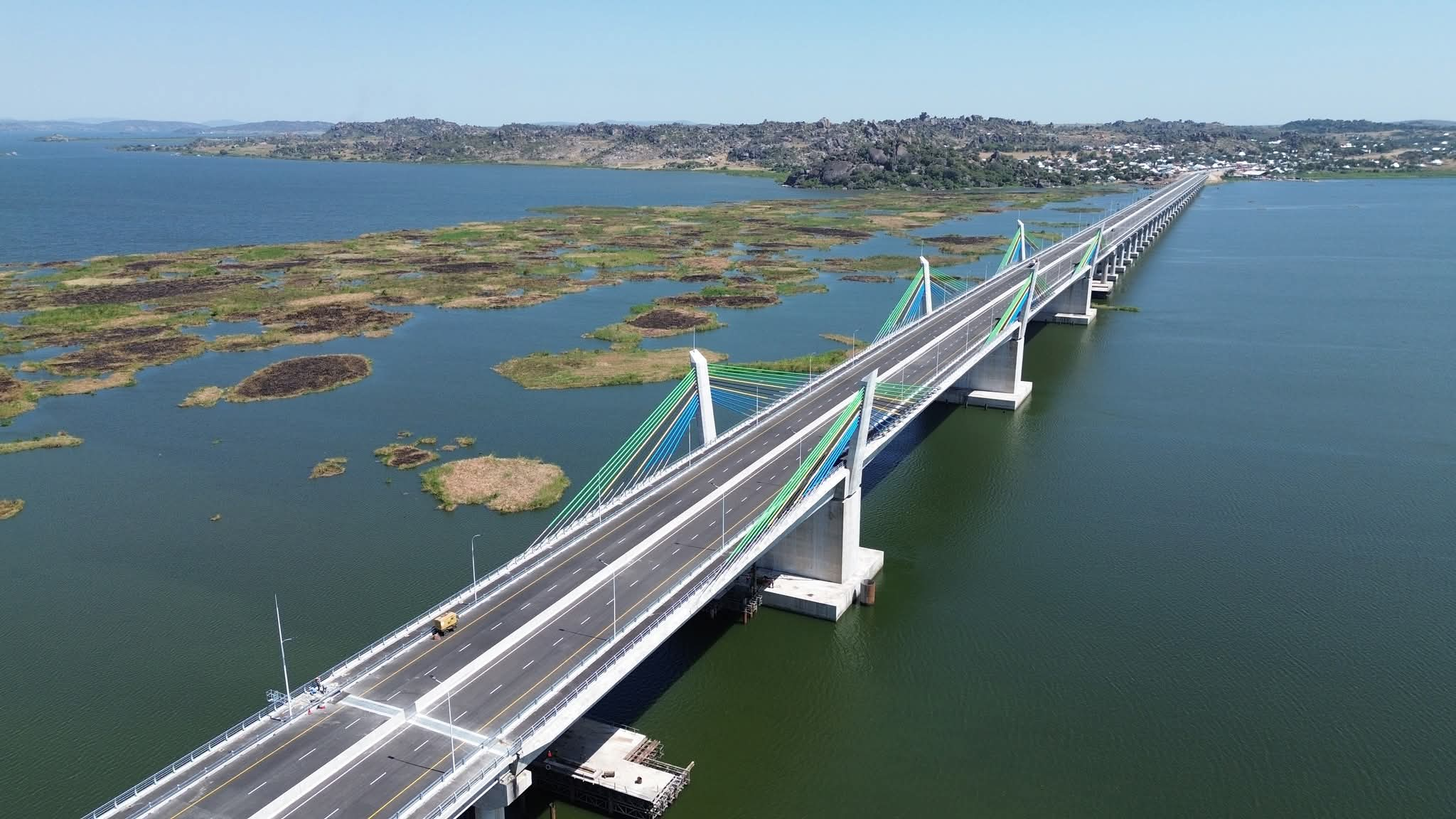AMAZING INFRASTRUCTURE: The Breathtaking Tokyo Bay Aqua-Line Undersea Tunnel
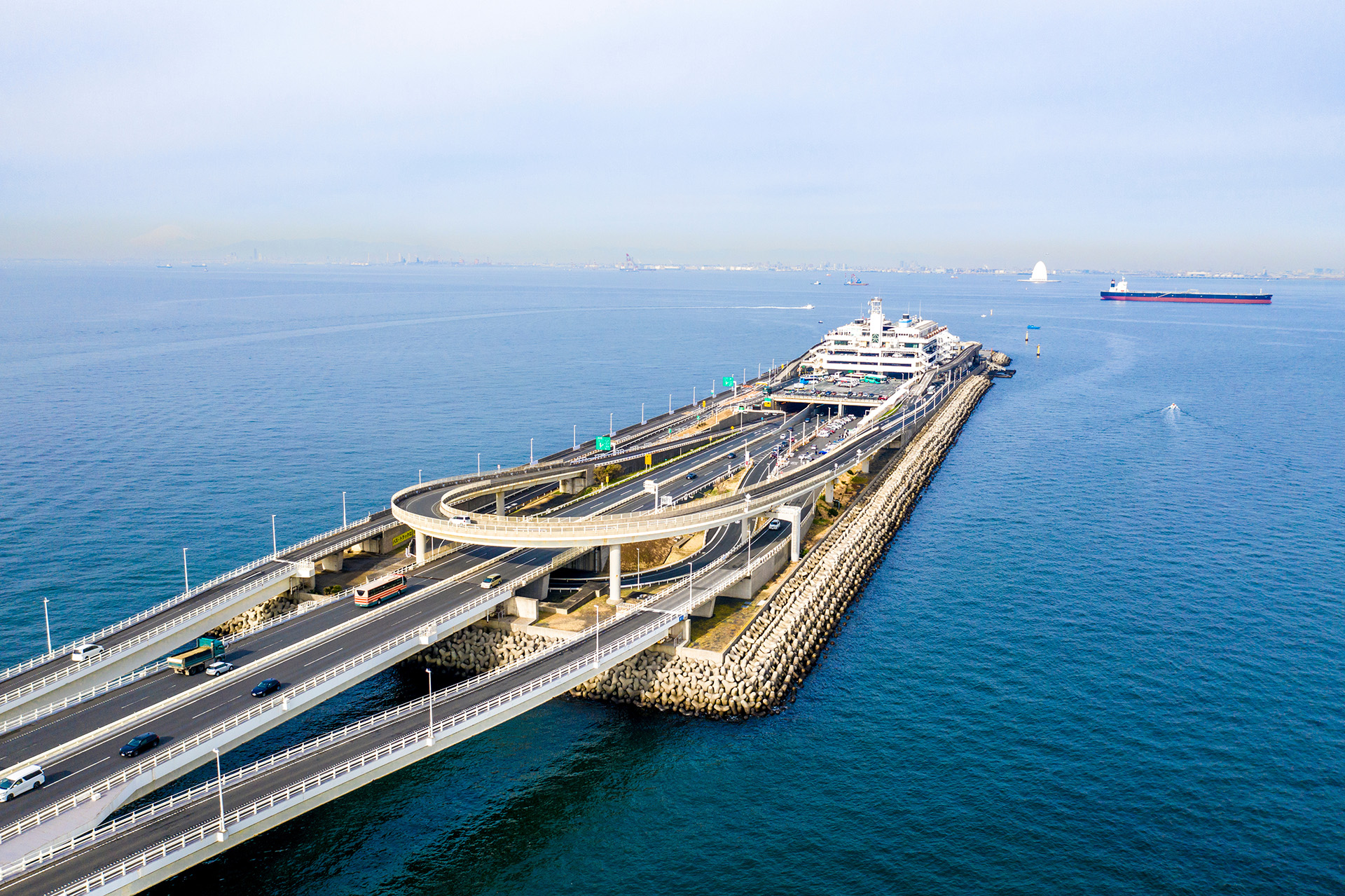
Did you know that the Tokyo Bay Aqua-Line is the fourth-longest underwater tunnel in the world and the world's second longest undersea portion road tunnel that links two urban cities located on both sides of Tokyo Bay?
The Tokyo Bay Aqua-Line, also known as the Trans-Tokyo Bay Expressway, is an expressway that is mainly made up of a bridge–tunnel combination across Tokyo Bay in Japan that connects the city of Kawasaki in Kanagawa Prefecture with the city of Kisarazu in Chiba Prefecture, and forms part of National Route 409.
Facing the challenge of linking the cities of Kawasaki and Kisarazu, two urban nucleus located on both sides of Tokyo Bay, Japanese authorities decided to resort to a viaduct, an underground canal. And, as a gift, it built two artificial islands over the Pacific waters, one of which is 650 meters and provides a huge parking and commercial area.
The project, named as Tokyo Bay Aqua-Line, though inaugurated already a quarter of a century ago, is still surprising for its dimensions, design and the technical solution with which it saves a bay of more than 14 kilometers wide in which the waters reach 70 meters of depth.
With an overall length of 23.7 kilometers, it includes a 4.4 km bridge and 9.6 km tunnel underneath the bay—the fourth-longest underwater tunnel in the world.
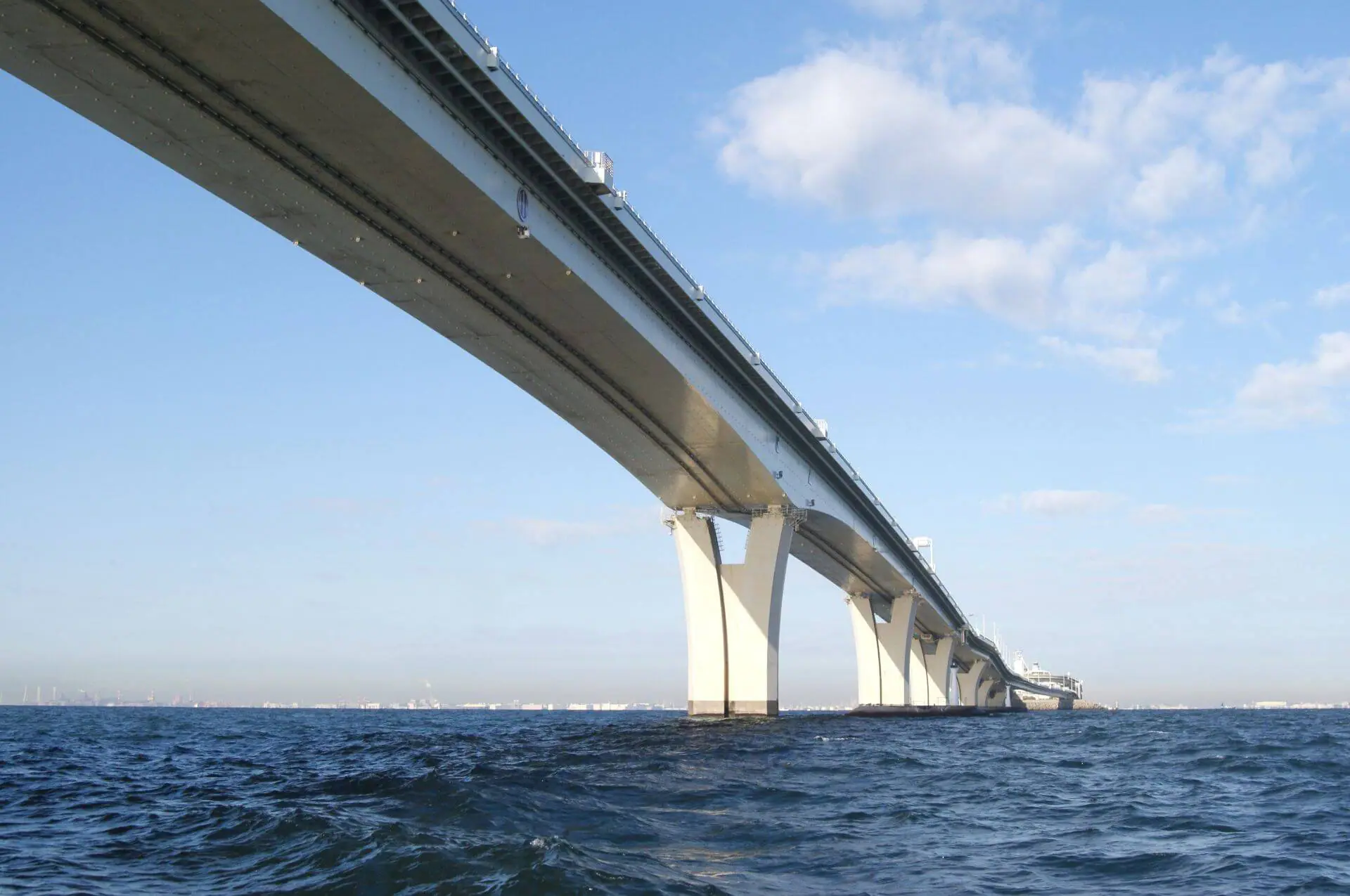
An artificial island, Umihotaru "sea firefly," marks the transition between the bridge and tunnel segments and provides a rest stop with restaurants, shops, and amusement facilities. A distinctive tower standing above the middle of the tunnel, the Kaze no Tō ("the tower of wind") supplies air to the tunnel, its ventilation system powered by the bay's almost-constant winds.
The ¥1.44 trillion (US$11.2 billion) roadway opened on December 18, 1997, after 23 years of planning and nine years of construction.
The Tokyo Bay Aqua-Line shortened the drive between Chiba and Kanagawa, two important industrial areas, from 90 to 15 minutes, and also helped cut travel time from Tokyo and Kanagawa to the seaside leisure spots of the southern Bōsō Peninsula. Before it opened, the trip entailed a 100 km journey along Tokyo Bay and pass through central Tokyo.
An explicit goal of the Aqua-Line was to redirect vehicular flow away from central Tokyo, but the expensive toll has meant only a limited reduction in central-Tokyo traffic. Many highway bus services now use the Tokyo Bay Aqua-Line, including lines from Tokyo Station, Yokohama Station, Kawasaki Station, Shinagawa Station, Shibuya Station, Shinjuku Station and Haneda Airport to Kisarazu, Kimitsu, Nagaura station, Ichihara, Mobara, Tōgane, Kamogawa, Katsuura and Tateyama.
Source: Wikipedia
#penglobalfactfile
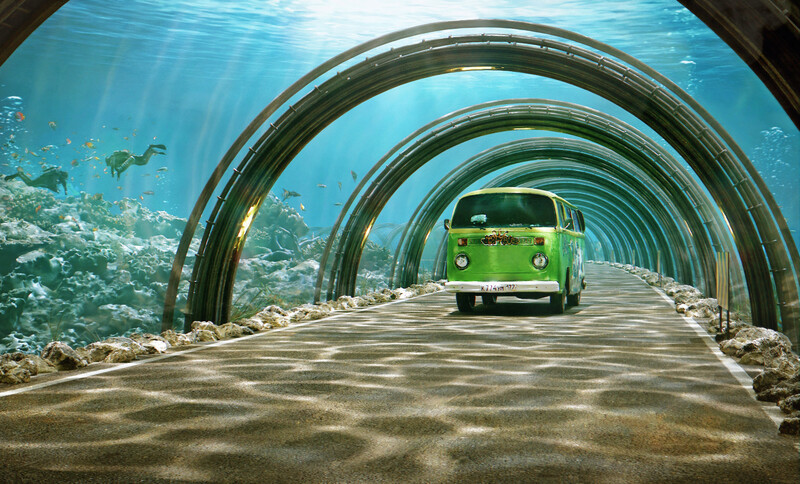
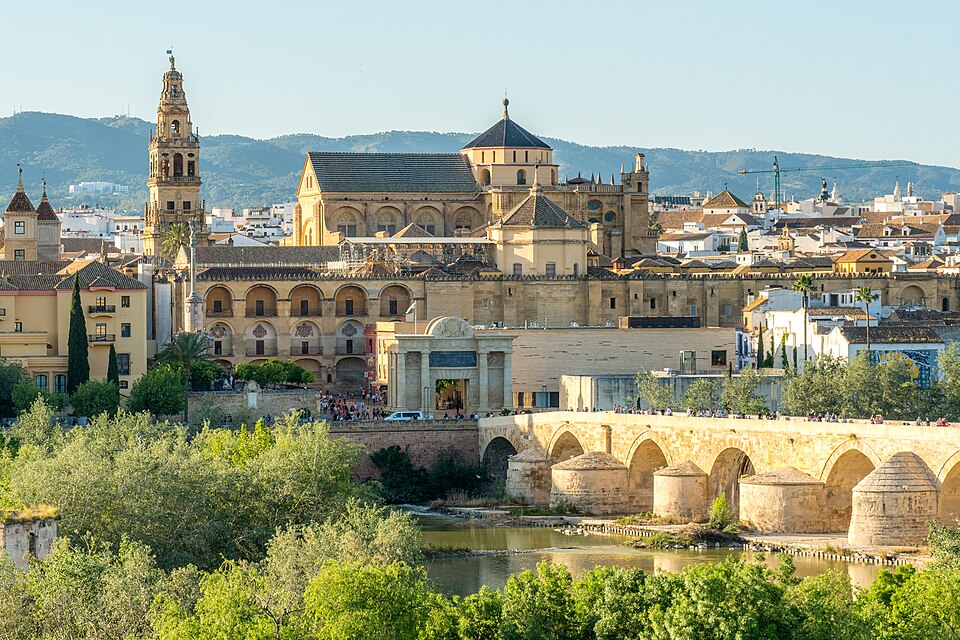
_1755775186.jpg)
